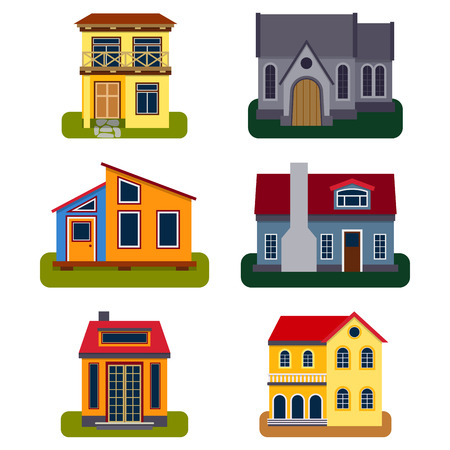1. Understanding the Needs of Small Pets
Before setting up a DIY playground for your small pet, its essential to understand their physical and mental stimulation needs. Rabbits, guinea pigs, hamsters, and ferrets all require engaging environments to stay happy and healthy. A well-designed play area can help prevent boredom, obesity, and behavioral issues.
Physical Activity Requirements
Each type of small pet has different exercise needs. Below is a general guideline for how much daily activity they require:
| Pet Type | Recommended Daily Exercise |
|---|---|
| Rabbits | 3-4 hours of free-roaming or supervised playtime |
| Guinea Pigs | 1-2 hours in a spacious play area |
| Hamsters | 30 minutes to 1 hour on a running wheel or in a safe space |
| Ferrets | 4+ hours of interactive play and exploration |
Mental Stimulation Needs
Small pets thrive when they have opportunities to explore, solve problems, and interact with their surroundings. Providing tunnels, climbing structures, chew toys, and foraging activities can keep them mentally engaged.
Enrichment Ideas for Different Pets
- Rabbits: Hide treats in cardboard boxes or create digging areas.
- Guinea Pigs: Set up tunnels and provide soft bedding for burrowing.
- Hamsters: Use a multi-level habitat with hideouts and running wheels.
- Ferrets: Incorporate hanging hammocks, tubes, and interactive toys.
Creating a Safe Play Area
Safety is key when designing a playground for your small pet. Ensure the space is escape-proof, free from toxic materials, and has no sharp edges. Always supervise your pet during playtime to prevent accidents.
Essential Safety Tips:
- Avoid using plastic toys that can be chewed into small pieces.
- Check for gaps where pets might get stuck or escape.
- Use pet-safe materials like untreated wood and non-toxic glue.
- Provide fresh water nearby in case they get thirsty during play.
By understanding the unique needs of your small pet, you can create a fun and enriching environment that keeps them active and engaged.
2. Choosing the Right Space for a DIY Playground
Creating a fun and safe playground for your small pet starts with choosing the right location in your home. The space you select should provide enough room for movement, be free of hazards, and be easily accessible for both you and your pet.
Factors to Consider When Selecting a Space
| Factor | Why It Matters |
|---|---|
| Space Availability | Your pet needs enough room to explore and play comfortably without feeling restricted. |
| Safety | The area should be free from sharp objects, toxic plants, or anything that could harm your pet. |
| Accessibility | You should be able to monitor your pet easily while they play, ensuring their safety at all times. |
| Flooring Type | A non-slip surface is ideal to prevent injuries. Avoid hardwood floors if they are too slippery. |
| Noise Level | A quiet area can help keep your pet calm and relaxed during playtime. |
| Cage Proximity | If your pet has a cage or enclosure, setting up the playground nearby can make transitions easier. |
Best Locations for a Small Pet Playground
A Spare Room or Corner of a Room
If you have an unused room or an open corner in a living space, this can be a great spot for your small pet’s playground. Make sure to block off any areas where they shouldn’t go.
An Enclosed Balcony or Patio
If you have a secure balcony or patio, it can serve as an exciting outdoor play area. Ensure there are no gaps in railings and provide shade if needed.
A Sectioned-Off Area in the Living Room
Your living room can be a good option, especially if your pet enjoys being around people. Use barriers or playpens to create a designated play zone.
A Safe Area in the Bedroom
A bedroom can work well if it’s already a familiar and comfortable space for your pet. Just make sure there are no exposed wires or other potential dangers.
Tips for Setting Up the Space Safely
- Cord Management: Keep electrical cords out of reach to prevent chewing hazards.
- Toxin-Free Environment: Remove any toxic plants, cleaning supplies, or small objects that could be swallowed.
- Sufficient Ventilation: Ensure proper airflow so the space doesn’t become too hot or stuffy.
- Padded Areas: If necessary, add soft mats or rugs to cushion jumps and prevent slips.
- No Escape Routes: Block off small gaps where your pet might squeeze through and get stuck.
Selecting the right space is essential for creating an enriching environment where your small pet feels safe and excited to explore. With careful planning, you can design a perfect playground that fits seamlessly into your home!

3. Creative Ideas for DIY Play Structures
Creating a fun and engaging play area for your small pet doesn’t have to be expensive or complicated. With a little creativity and some household items, you can design exciting play structures that encourage exploration and exercise. Below are some simple and safe DIY ideas that will keep your furry friend entertained.
Tunnels for Exploration
Tunnels are a great way to stimulate your pet’s curiosity while providing a cozy place to hide and play. You can create tunnels using various materials:
- Cardboard Tubes: Large cardboard tubes from paper towel rolls or shipping boxes can be cut and connected to form tunnels.
- PVC Pipes: Pet-safe PVC pipes are durable and easy to assemble into different tunnel shapes.
- Fabric Tunnels: Sew fabric tunnels using old t-shirts or fleece for a soft and collapsible option.
Climbing Platforms for Exercise
Small pets love to climb, so adding platforms encourages physical activity. Here are some ideas:
| Material | Description |
|---|---|
| Shoe Boxes | Stack sturdy shoe boxes at different heights to create steps and levels. |
| Wooden Planks | Use pet-safe wood pieces to build small ramps or platforms. |
| Cage Attachments | Add shelves inside cages for extra climbing opportunities. |
Hideouts for Comfort
A cozy hideout provides a sense of security for your pet. Here are some easy options:
- Cardboard Houses: Cut openings in a sturdy cardboard box to create an enclosed space.
- Coconut Shell Hideouts: If you have smaller pets like hamsters, hollowed-out coconut shells make excellent natural hiding spots.
- PVC Pipe Dens: Arrange short PVC pipes into small cubbies where your pet can retreat and relax.
4. Ensuring Safety and Durability
When creating a DIY playground for your small pet, safety should always come first. A well-designed play area not only keeps your pet entertained but also ensures they stay out of harm’s way. Here’s how to make sure your pet’s playground is both safe and durable.
Avoid Toxic Materials
Many common household materials can be harmful to small pets if chewed or ingested. Always choose non-toxic, pet-safe materials when building your playground.
| Material | Safe or Unsafe? | Notes |
|---|---|---|
| Untreated Wood | Safe | Avoid wood treated with chemicals or paints. |
| Plastic | Depends | Use BPA-free plastic that won’t break into sharp pieces. |
| Metal (Wire Mesh) | Depends | Avoid rust-prone metals; ensure no sharp edges. |
| Cardboard | Safe | A great temporary option but replace if soiled or chewed excessively. |
| Glue & Paints | Unsafe | Only use pet-safe adhesives and water-based paints. |
Eliminate Sharp Edges and Small Gaps
Your pets curiosity might lead them to squeeze into tight spots or chew on surfaces. Check all corners and edges for sharp points that could cause injuries, and make sure there are no small gaps where their paws or head could get stuck.
Smoothing Rough Surfaces
- Sand down any rough wood edges.
- Tape over exposed wires or sharp plastic edges.
- Avoid using staples or nails in easily accessible areas.
Secure the Structure to Prevent Accidents
Pets love to climb and explore, so ensuring the stability of your playground is crucial. If the structure is wobbly, it could tip over and cause injury.
Tips for Stability:
- Use sturdy materials that won’t collapse under your pet’s weight.
- If using multi-level structures, secure them firmly to prevent tipping.
- Avoid stacking loose items that could shift when climbed on.
- Regularly check for wear and tear, especially on ramps and platforms.
Remove Potential Choking Hazards
Small objects can pose a choking risk to pets. Avoid using loose parts like beads, screws, or buttons in your design. If you include tunnels or hideouts, make sure they’re large enough for your pet to move through safely without getting stuck.
Create a Safe Flooring Surface
The flooring of your pet’s playground should provide good traction to prevent slipping and be easy to clean in case of accidents.
Recommended Flooring Options:
- Fleece fabric: Soft and comfortable while providing grip.
- Cork sheets: Natural, non-toxic, and offers cushioning.
- Puzzle mats: Provide a soft surface but avoid ones with detachable small pieces.
- Avoid newspaper or slick plastic: These can be slippery and unsafe for small paws.
Regular Inspections for Wear and Tear
No matter how well you build the play area, time and use will lead to wear. Make it a habit to inspect the playground regularly to ensure everything remains safe for your pet.
Checklist for Routine Safety Checks:
- Look for signs of chewing damage on wood or plastic parts.
- Tighten any loose screws or fasteners.
- Replace worn-out or frayed fabrics used in hammocks or bedding areas.
- C heck for mold or moisture buildup in enclosed spaces like tunnels.
A well-maintained play area ensures your pet stays safe while enjoying their space. By carefully selecting materials, securing structures, and performing regular safety checks, you can create a fun and worry-free environment for your furry friend!
5. Encouraging Interactive Play and Exploration
Creating a stimulating environment for your small pet is essential for their well-being. Interactive play helps keep them engaged, reduces boredom, and promotes physical activity. By incorporating elements like treat puzzles, rotating toys, and obstacle courses, you can make playtime both fun and enriching.
Interactive Elements to Keep Your Pet Engaged
Adding interactive elements encourages your pet to explore and stay active. Below are some ideas to enhance their play area:
Treat Puzzles
Treat puzzles challenge your pet’s problem-solving skills while rewarding them with a tasty snack. You can purchase puzzle feeders or create DIY versions using household items.
| Puzzle Type | Description |
|---|---|
| DIY Cardboard Box Puzzle | Cut holes in a small box and hide treats inside for your pet to find. |
| Hidden Treat Tubes | Use empty toilet paper rolls filled with hay and hidden treats. |
| Store-Bought Puzzle Toys | Puzzle feeders designed for small pets that dispense treats when solved. |
Rotating Toys
To prevent boredom, switch out toys regularly so your pet always has something new to explore. Consider different textures, shapes, and sounds to keep things interesting.
- Chewable Toys: Wooden blocks or hay-based chews to keep teeth healthy.
- Noisy Toys: Small bells or crinkle balls that make gentle sounds when touched.
- Tunnel Systems: Expandable tunnels encourage exploration and hiding.
Obstacle Courses
An obstacle course adds excitement and encourages movement. You can create one using simple household materials:
- Tunnels: Use cardboard tubes or plastic tunnels for crawling fun.
- Wooden planks or sturdy boxes can create climbing opportunities.
- Small jumps made from popsicle sticks or low barriers encourage agility.
The Importance of Variety in Playtime
Your pet thrives on variety. By changing the layout of their playground and introducing new activities, you help stimulate their mind and body. Regularly observe what they enjoy most and adjust their play area accordingly.


